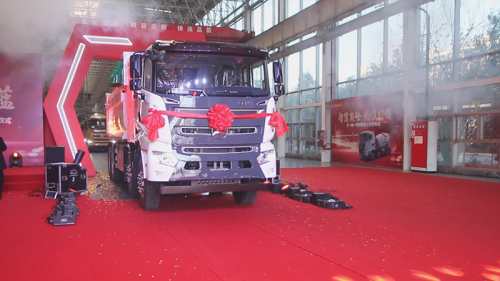
Construction has been far from sustainable throughout history, but that’s starting to change. Two of the latest products from Chinese heavy equipment manufacturer Sany are powered by hydrogen. If they see wide enough deployment, they could have a considerable impact on construction-related emissions.

This isn’t China’s first foray into hydrogen power. The nation hopes to have 1 million fuel cell vehicles on the road by 2030 as part of its carbon neutrality goals. Sany’s fuel cell-powered dump truck and mixer are the latest advancements in the mix, and are particularly noteworthy ones at that.
Like all fuel cell vehicles, this construction equipment is carbon-free. According to Sany, they also outperform incumbent alternatives in several areas.
Construction’s Emissions Problem
Most fuel cell vehicles target consumers, but heavy industries like construction are bigger polluters. Construction is responsible for 23% of all air pollution, and the heavy machinery it relies on is a significant part of that. These trucks and other machines are often even less efficient than standard road vehicles due to their extreme workloads.
Since construction equipment is typically expensive, many companies use old models for years, even decades. These older vehicles don’t match up to modern emissions standards, even for heavy equipment. This reliance on outdated, less efficient engines exacerbates the already concerning construction emissions problem.
China’s construction industry is far more active than other countries, as well. The nation has been responsible for roughly half of global construction growth since 2010. That remarkable growth coupled with construction’s high emissions levels adds to a considerable amount of carbon pollution.
A Hydrogen-Powered Solution
Given how environmentally destructive construction can be, these new fuel cell vehicles are a promising step forward. Hydrogen produces no harmful emissions, so replacing old diesel equipment with fuel cell-powered options will bring substantial benefits. Even replacing just a few vehicles would represent a significant reduction in emissions.
Sany claims that their hydrogen vehicles are also better at construction work. Most notably, fuel cells are more efficient than combustion engines, so these machines can operate longer. The fuel cell stacks also deliver an energy conversion rate of more than 50%, giving these vehicles more power.
Sany’s fuel cell-powered construction vehicles also feature integrated heat management systems to help them perform better in extreme weather. Leakage detection and overcurrent protection provide added safety benefits as well.
Sany is one of the largest construction equipment manufacturers in the world. As such, these two new vehicles could create a ripple effect throughout the construction industry. More construction teams will have access to zero-emissions equipment, and more manufacturers could produce green alternatives to compete.
Hydrogen Power’s Uses Continue to Grow
Emissions come from sources far beyond people’s daily commutes. While consumer vehicles have been the primary target for fuel cells, hydrogen power has broader potential. As Sany has proved with its latest two machines, hydrogen fuel cells can improve construction equipment as well.
Fuel cell-powered vehicles can help transform the construction industry into something more sustainable. As the available lineup of hydrogen vehicles keeps growing and becoming more diverse, emissions will drop across various sectors. With more adoption and advancement, fuel cells could drive the world towards sustainability.
Read the most up to date Fuel Cell and Hydrogen Industry news at FuelCellsWorks




